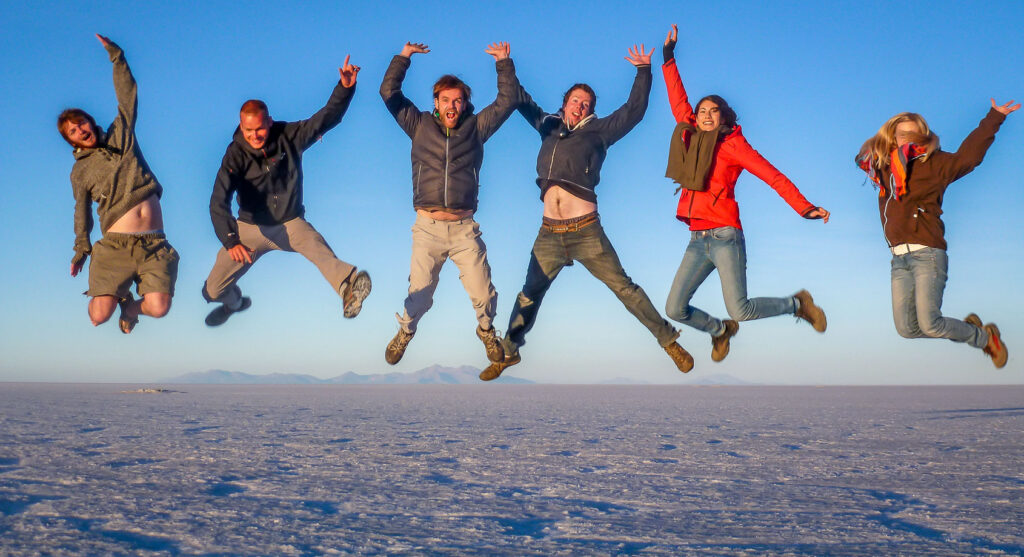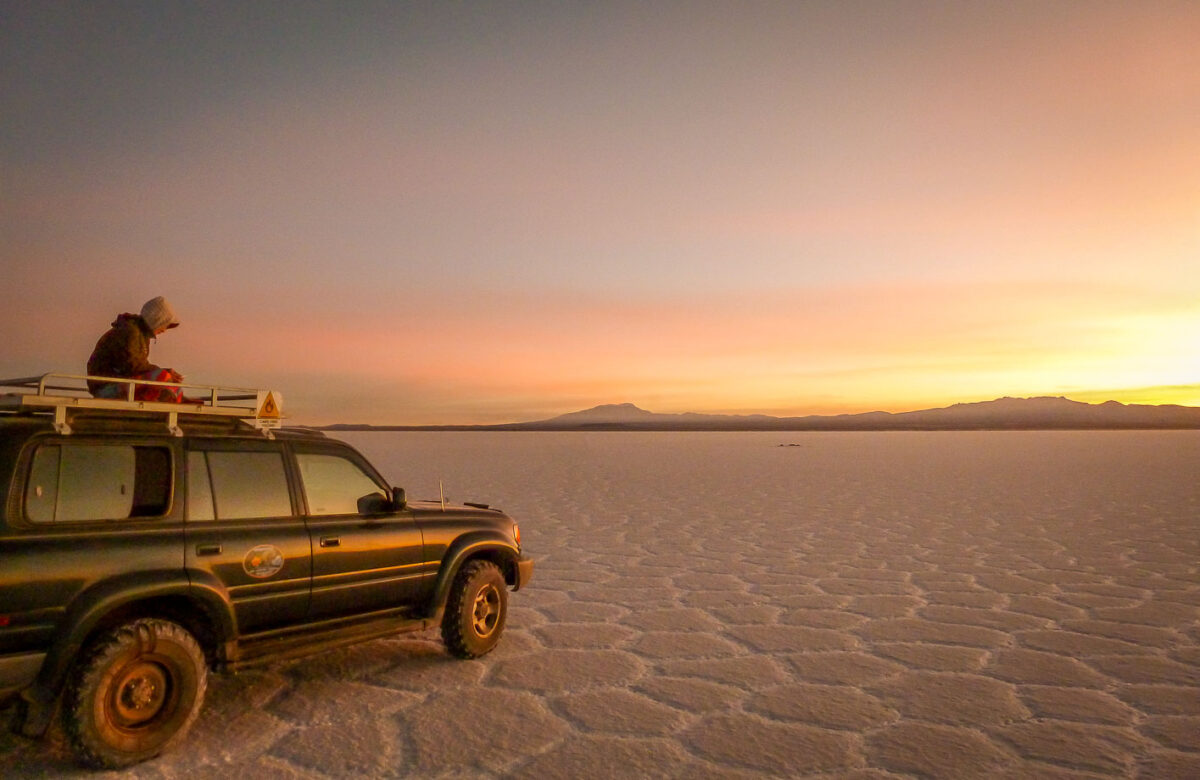The Salar de Uyuni is the largest salt flat in the world and one of the highlights of South America. It is over 10000 sq km in area. It was formed following the evaporation of several pre-historic lakes over 40000 years ago.
It is part of the Bolivian Altiplano, the highest plateau in the world after the Tibetian plateau. It reaches heights of up to 4500m above sea level. It features stunning mountain scenery, fresh and salt water lakes, and everchanging landscapes.
It is home to several species of animals including flamingos and vicunas, a close relative of the llama.
It is very popular with tourists and you can do a 3 or 4 day tour starting in Chile at Atacama dessert and finishing in the Bolivian town of Uyuni, or vice versa. Alternatively, it is possible to take a one day tour from Uyuni.
Because the Salar de Uyuni is so flat, it is popular for tourists to take perspective shots, creating optical illusions.
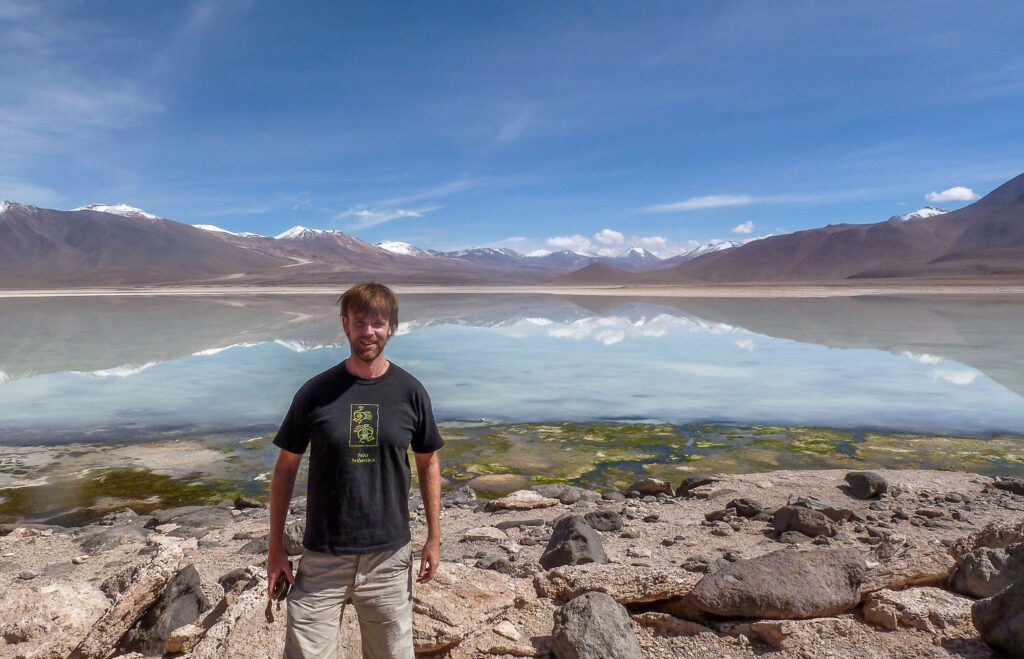
My Salar de Uyuni experience
I took a 3 day tour with a group of 5 other travellers in a 4×4 from San Pedro de Atacama in Chile. Our driver didn’t speak a great deal of English and we had to communicate with him in basic Spanish.
On the first day, we drove across the Antiplano featuring stunning mountains with multi-coloured lakes with flamingos.
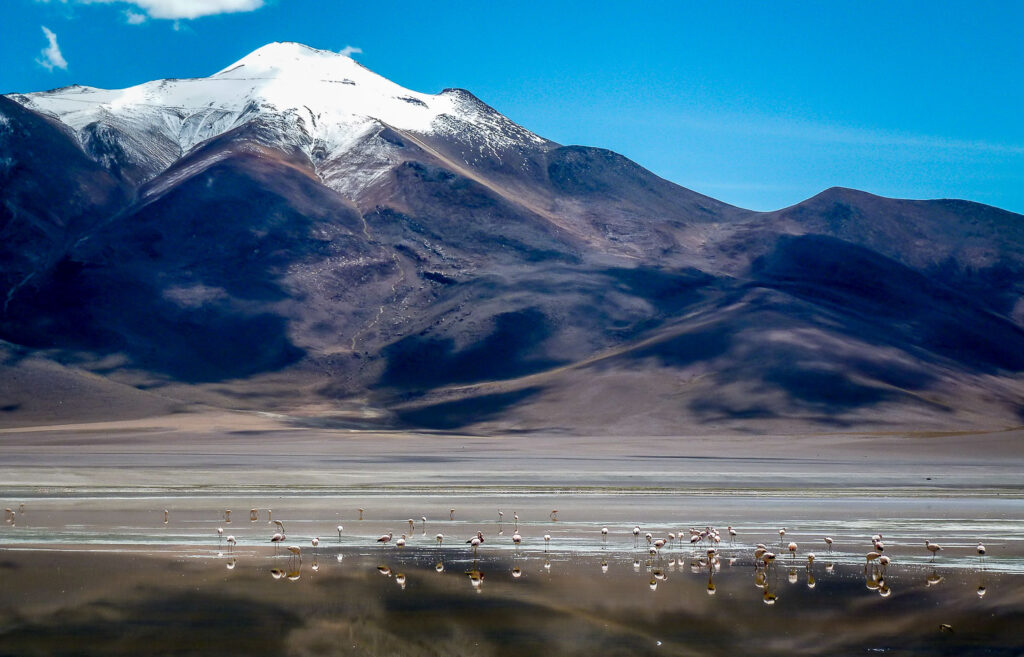
We reached our camp in the early afternoon for lunch and some chill time before going on another afternoon sightseeing drive. The camp was 4500m above sea level. To be honest, after experiencing horrible altitude sickness on a previous trip in Peru, I was a bit nervous. We sat down to lunch on a picnic table. After a while, I noticed the guy next to me was starting to lean on me. I was about to tell him to knock it off when I noticed his hands were in the mashed potatoes. The woman sitting opposite freaked out when she realised. He was completely gone. We had to lay him down to sleep and luckily he recovered, otherwise, we would have had to drive to a lower altitude. This would have meant taking a detour and missing a significant part of the trip. The problem on the Antiplano is that if you get into trouble with altitude sickness, you are stuck there and can’t just descend. This did freak me out a bit and I had difficulty sleeping and breathing at points.
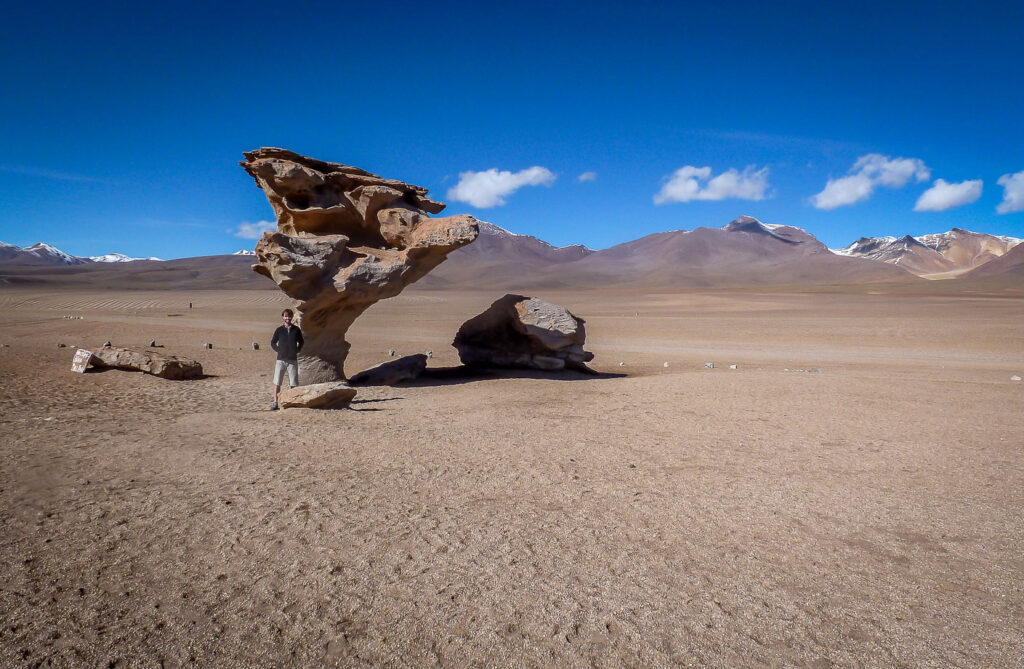
On the second day, we drove through even more desert and mountain landscapes, including the famous Arbol de Piedra (Tree of Stone) formed by erosion; the Sol de Manana (Morning Sun), a geothermal landscape with geysers, mud the smell of sulphur; and the Valle de Rocas (Valley of Rocks), stunning landscape with rock formations set against stunning mountain ranges.
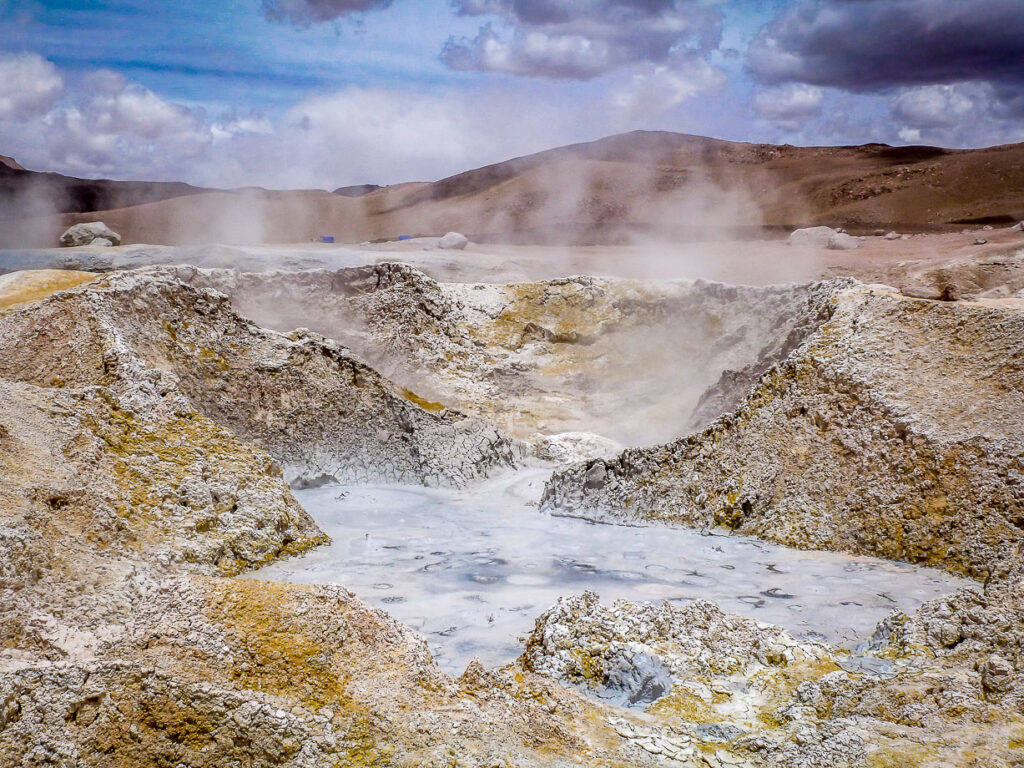
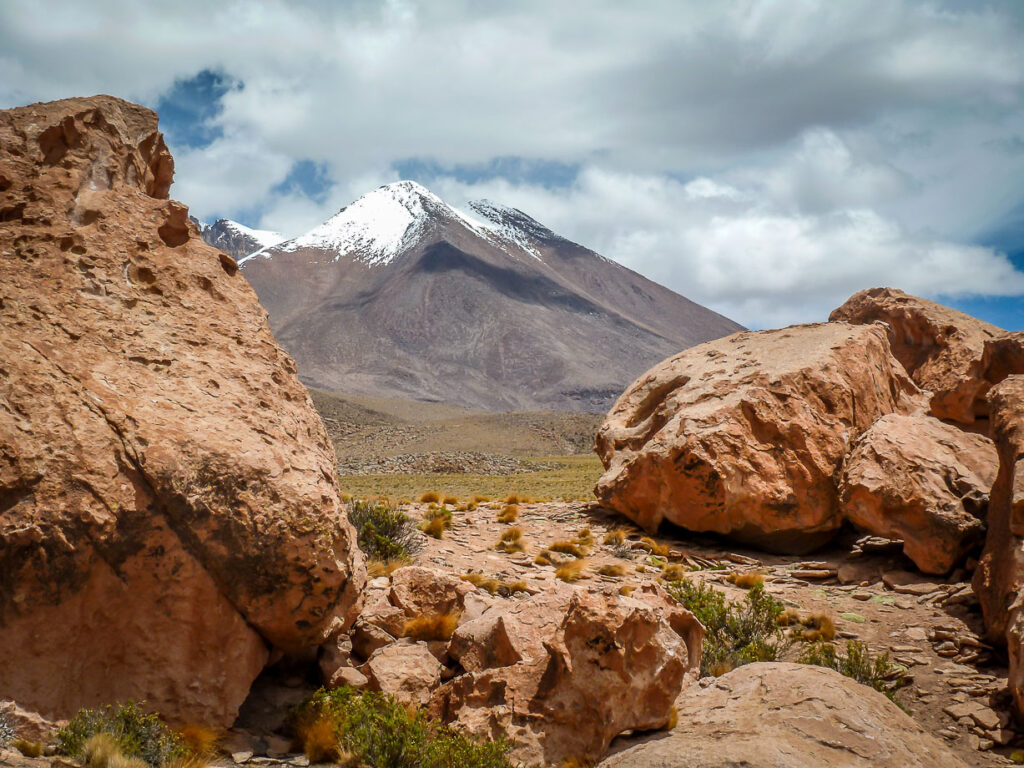
On the way to Uyuni, we passed by the train graveyard. Uyuni was once a important stop on a train network in the 19th century. However, once the mining industry collapsed in 1940, the trains were abandonned. You can stop and climb the trains.
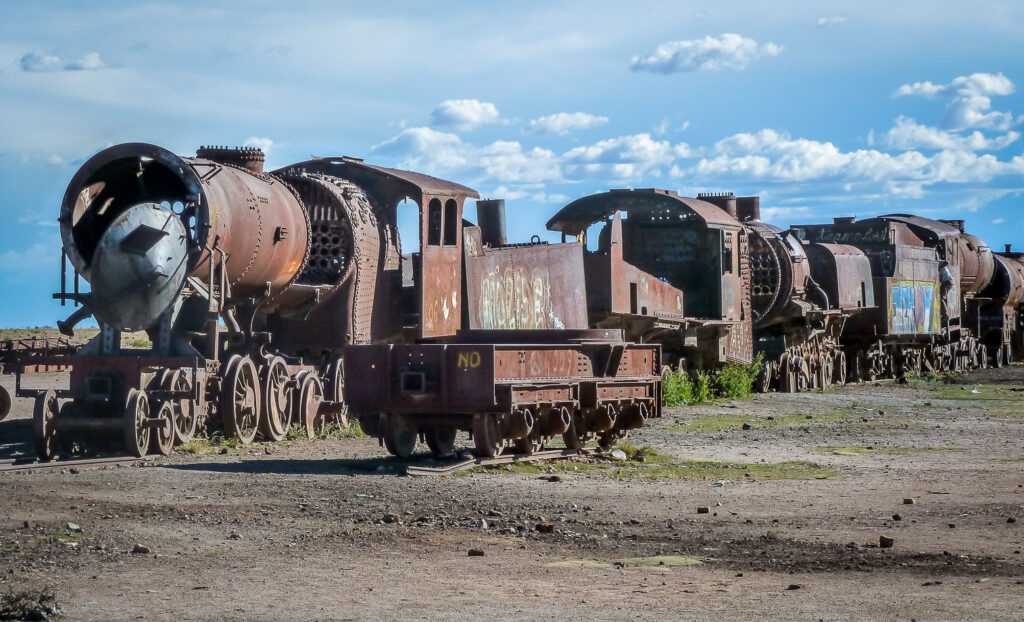
After staying a night in Uyuni, a pretty unspectacular town, we got up before sunrise to visit the salt flats themselves as the final part of the tour. The Salar de Uyuni is a unique and special place and watching the sunrise was an amazing experience. That said, it is just luck and we didn’t get the spectacular colours I had seen in photos of people who had been there at sunset (having taken the tour from Uyuni itself).
There is an ice hotel in the centre of the flat, which you can visit or even stay overnight. We took the obligatory perspective/depth of field shots and ended the tour back in Uyuni.
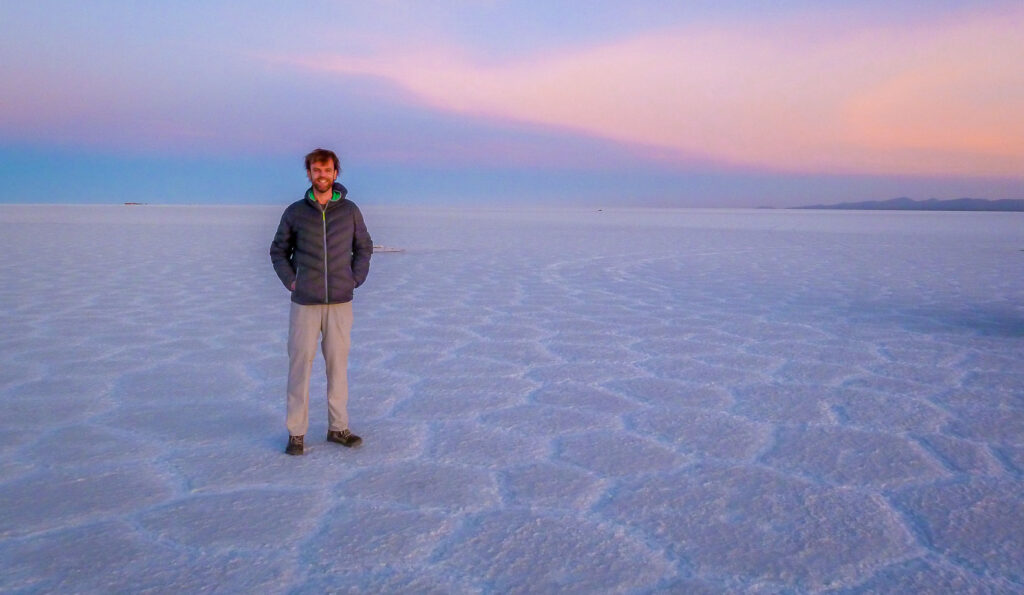
Epilogue
Bolivia has hands-down the most beautiful mountain scenery in South America. The Salar de Uyuni tour is one of the absolute highlights of the continent and a must see for any entrepid traveller. Yes, the altitude is a challenge the conditions are harsh, but worth it. Experiencing hardship but at the same time great natural beauty and wonder forms special bonds between you and fellow travellers. It was an experience I will never forget.
